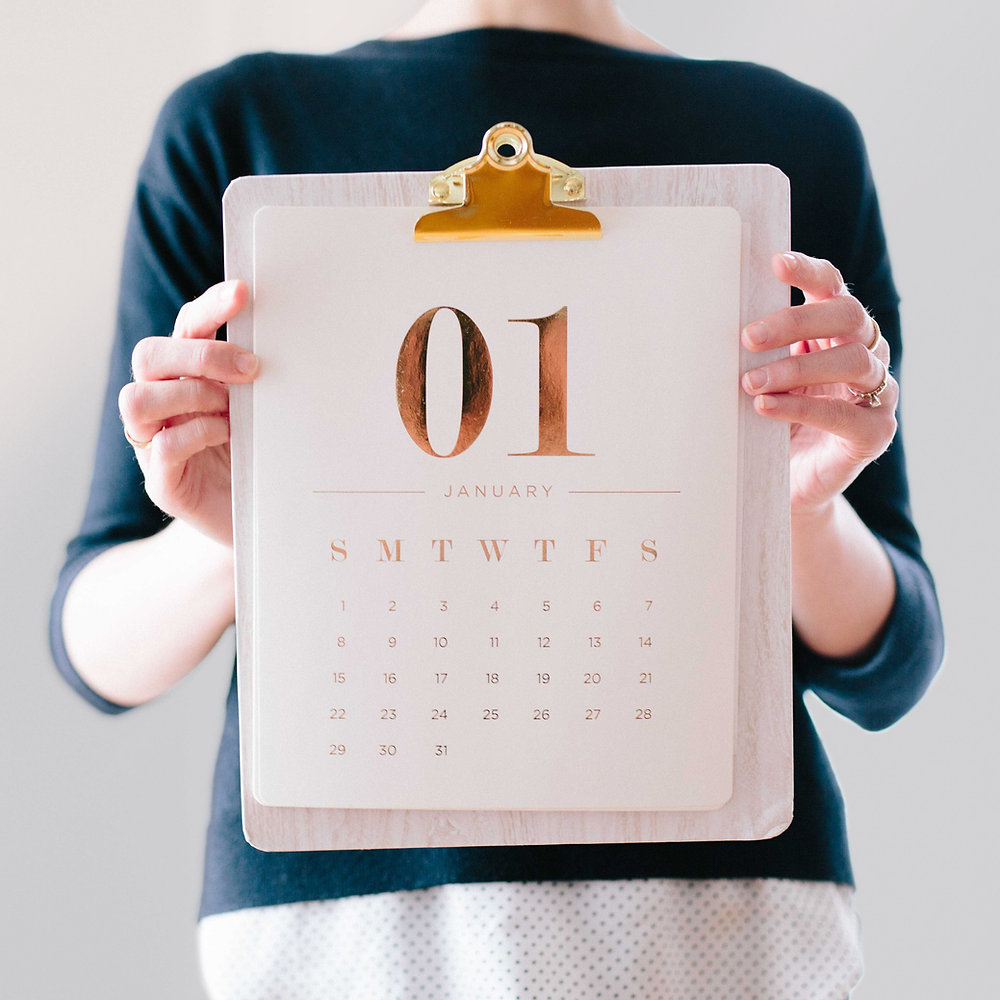
Plan for a Year and Hope for Less
While the trademark application process has standard timelines, all trademark applications are unique with many presenting challenges that can take the standard timeline down a road of many twists and turns. However, after experiencing all types of trademarks and office actions, we recommend that our clients plan for a full year before they have a complete registration.

Step 1: Clearance Search – 1 to 2 Weeks
Prior to filing an application, it is very important to perform a thorough clearance search to ensure that you have the right to use the mark. The length of time a good clearance search takes differs depending on the complexity of the mark, the type of search performed and your attorney’s practice. At Creative Law Studio, one to two weeks is our standard timeline for a trademark clearance report and opinion. We often complete these much sooner, but because some search reports can be returned with thousands of results, we plan for more time.
One of the most important timing details to keep in mind is that the purchase of a clearance report is like taking a snapshot of the existing registrations and applications in that small moment in time. For this reason, it is very important that the application is filed as closely to the clearance and analysis as possible. If your application is not filed for months after the clearance report is purchased, the report loses its purpose and value.
Step 2: Application Drafting – 1 Week
Again, this depends on your attorney and their particular practice. However, the drafting of the application will typically be complete within one week of the client’s decision to move forward. But like all other aspects of this timeline, it really depends on the application and the client’s responsiveness. Some factors that can affect the timing:
Is the application for a single classification or multiple classifications?
Is the application a TEAS Plus or a TEAS Standard?
Is the application being filed as a Section 1(a) or Section 1(b)?
How many revisions between the attorney and client?
How long before the client approves the application through a signature?
Step 3: Sit and Wait – 3 to 4 Months
Once the client approves and signs the application, we will file it as soon as possible. At that point, all that can be done is to sit and wait. Within three to four months the applicant’s attorney will receive an email that the application has made it to the desk of a United States Trademark Examiner and the formal prosecution has begun. This typically occurs within a week of the commencement of examination.
Step 4: Examination to Notice of Publication – 1 Month
Once the examiner has reviewed the application, the applicant’s attorney will typically receive an update on the examination within one month. If the applicant’s attorney receives a notice of publication, this means that the application has made it through the examiner’s review without any issues and it will move directly to the publication phase. That is the best-case scenario. However, one of three options will occur at the completion of examination:
2. Email or phone call between attorneys to fix minor issues with the application through an Examiner’s Amendment
Step 5: From Notice of Publication to Publication Date – 1 Month
Once the notice of publication is received, the trademark will be published in the United States Trademark Official Gazette in approximately 1 month. The purpose of the publication is to allow third parties to oppose registration of the mark if they believe it infringes on their registration.
Step 6: Opposition Period – 1 Month
This opposition period runs for 1 month (in addition to the month between notice of publication and the actual publication date). If at the end of 1 month, no oppositions have been filed, the examiner will move the application to the next phase.
Step 7: Notice of Allowance – 1 to 2 Months
After an opposition period with no formal opposition filed, the applicant’s attorney will receive an approval for registration about 1 to 2 months after the opposition period ends. This confirms that the mark will move forward with registration. At this point, there are few procedural and substantive issues that can stop the completion of registration.
Step 8: Registration Issued – 2 Months
Once you have been approved for registration, you can expect a 2 month wait before receiving the registration certificate.
There are a few reasons that a trademark may take longer to register. We’ll examine these reasons in a later post.

Monica is an attorney with a practice dedicated exclusively to trademark law. Monica founded and owns Creative Law Studio, a law firm with creative minds to best serve creative clientele. Creative Law Studio is able to serve clients with a wide-range of budgets, due to the firm’s boutique, web-based presence. Creative Law Studio is committed to providing excellent counseling to our clients and we get just as excited about your trademark as you do.
Disclaimer: This blog/website is intended to be published for educational and entertainment purposes and to give readers a general idea of the law of trademark. This blog/website is not intended to give any specific legal advice or to target a specific person. Readership of this blog cannot create an attorney-client relationship between you and the publisher. This blog should never be used to substitute the seeking out of personal, legal advice. The discussion of an existing or potential trademark shall not be taken as an endorsement by creative law studio, nor shall the same be taken as an endorsement of creative law studio. The discussion of specific trademarks does not mean that creative law studio is a record attorney for such trademarks.
Discover more from reviewer4you.com
Subscribe to get the latest posts to your email.





